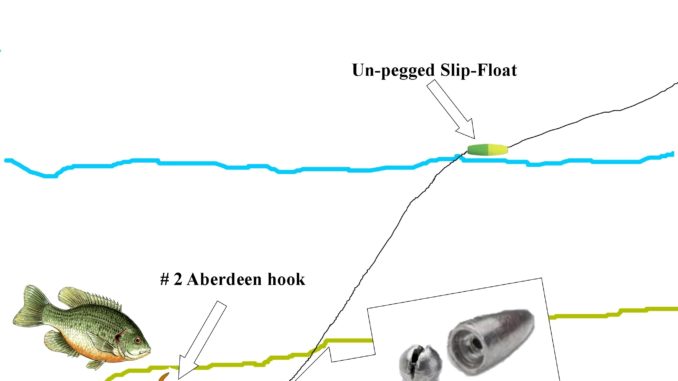
Tackle and rigging for shellcrackers can be as simple as a No. 2 hook with a couple of split-shot up the line. Brad Taylor uses this type rig on many of his rods with a couple of simple modifications.
“Since we’re fishing on rocky points, I like to slide an eighth-ounce bullet weight ahead of the split-shot,” he said. “The bullet weight seems to fend off some of the hang-ups that occur when you’re reeling the line back in.”
For shallow-water fishing when he’s casting toward the bank, he slides a small, 2-inch crappie float on the line ahead of both weights. Ordinarily, he would peg the cork when fishing for bluegills, but he leaves the peg out for shellcrackers.
“The cork acts as a strike indicator,” he said. “The weight is on the bottom, but the cork holds the line up. I use 10-pound test line; shellcrackers aren’t line-shy at all, and the larger line helps you land the occasional channel catfish or largemouth bass that comes along. When a shellcracker picks up a bait and heads straight back to the boat, it’s sometimes hard to tell without the cork. If the cork starts moving rapidly in any direction, you know he’s got it and can set the hook.”
The benefits of not pegging the cork are that it offers no resistance to a retreating fish, and there’s no danger of the cork dragging the bait off the bottom. Taylor said the cork will move freely up and down the line, but it slides back to the weight while he’s fighting a fish.


Be the first to comment